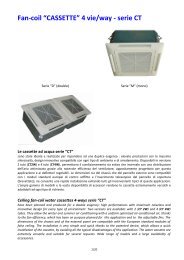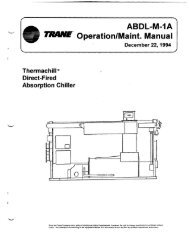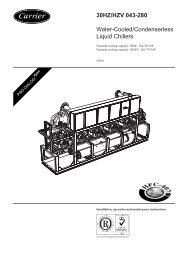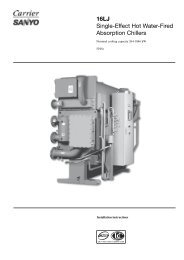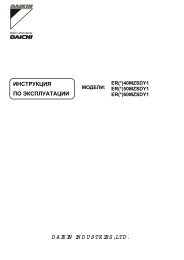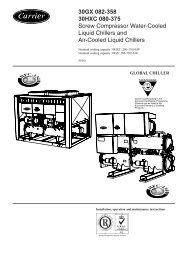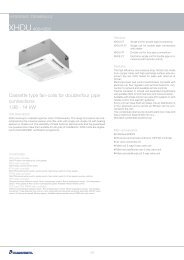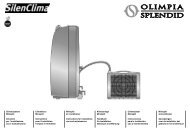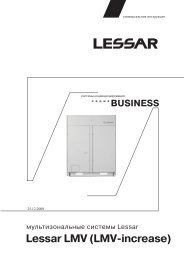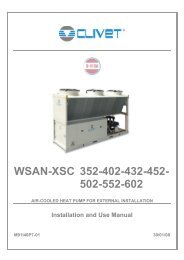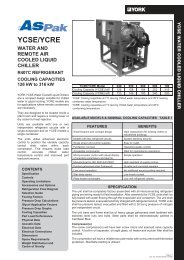"A" Ductable Liquid Chillers with Integrated Hydronic Module
"A" Ductable Liquid Chillers with Integrated Hydronic Module
"A" Ductable Liquid Chillers with Integrated Hydronic Module
Create successful ePaper yourself
Turn your PDF publications into a flip-book with our unique Google optimized e-Paper software.
During refrigerant removal and storage operations followapplicable regulations. These regulations, permitting conditioningand recovery of halogenated hydrocarbons under optimumquality conditions for the products and optimum safetyconditions for people, property and the environment aredescribed in standard NFE 29795.Any refrigerant transfer and recovery operations must becarried out using a transfer unit. A 3/8” SAE connector onthe manual liquid line valve is supplied <strong>with</strong> all units forconnection to the transfer station. The units must never bemodified to add refrigerant and oil charging, removal andpurging devices. All these devices are provided <strong>with</strong> the units.Please refer to the certified dimensional drawings for the units.Do not drain water circuits containing industrial brines,<strong>with</strong>out informing the technical service department at theinstallation site or a competent body first.Close the entering and leaving water shutoff valves andpurge the unit hydronic circuit, before working on thecomponents installed on the circuit (screen filter, pump, waterflow switch, etc.).Periodically inspect all valves, fittings and pipes of therefrigerant and hydronic circuits to ensure that they do notshow any corrosion or any signs of leaks.Do not re-use disposable (non-returnable) cylinders orattempt to refill them. It is dangerous and illegal. Whencylinders are empty, evacuate the remaining gas pressure,and move the cylinders to a place designated for theirrecovery. Do not incinerate.Do not attempt to remove refrigerant circuit components orfittings, while the machine is under pressure or while it isrunning. Be sure pressure is at 0 kPa before removingcomponents or opening a circuit.Any manipulation (opening or closing) of a shut-off valvemust be carried out by a qualified and authorised engineer.These procedures must be carried out <strong>with</strong> the unit shut-down.NOTE: The unit must never be left shut down <strong>with</strong> the liquidline valve closed, as liquid refrigerant can be trapped betweenthis valve and the expansion device. (This valve is situated onthe liquid line before the filter drier box.)Do not attempt to repair or recondition any safety deviceswhen corrosion or build-up of foreign material (rust, dirt,scale, etc.) is found <strong>with</strong>in the valve body or mechanism. Ifnecessary, replace the device. Do not install safety valves inseries or backwards.CAUTION: Do not step on refrigerant lines. The lines canbreak under the weight and release refrigerant, causingpersonal injury.No part of the unit must use feet, racks or supports duringoperation. Periodically monitor and repair or if necessaryreplace any component or piping that shows signs of damage.Do not climb on a machine. Use a platform, or staging towork at higher levels.Use mechanical lifting equipment (crane, hoist, etc.) to lift ormove heavy components such as compressors or plate heatexchangers. For lighter components, use lifting equipmentwhen there is a risk of slipping or losing your balance.Use only original replacement parts for any repair or componentreplacement. Consult the list of replacement parts thatcorresponds to the specification of the original equipment.6



